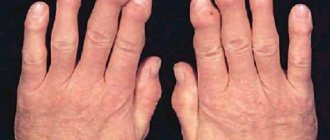- Stages of development of alcoholism
- Consequences of drinking alcohol
- Harm of alcohol for women
- Harm of alcohol for men
- The harm of alcohol for teenagers
- Harmless doses of alcohol
Drinking alcoholic beverages can be equated to a national tradition.
They find themselves on the table both on holidays and in days of mourning, they spend their leisure time and relax with them, without thinking about the dangers of alcohol on the body and its destructive effect on health. Ethyl alcohol is poison for humans. Depending on individual predisposition, even small doses can provoke serious disturbances in the functioning of organs, cause behavioral changes, and disrupt general well-being. Lack of moderation and systemic use of alcohol often cause the development of addiction, the fight against which requires considerable physical, moral and financial effort.
The specialists at the Vozvraschenie clinic know firsthand about the dangers of alcohol. On its basis, patients are provided with competent and high-quality assistance aimed at eliminating the consequences of alcohol abuse. The clinic’s doctors help cope with the symptoms of a hangover, relieve binge drinking, relieve intoxication, and also select a course of treatment and rehabilitation. Drug treatment is provided at home, on an outpatient basis or in a hospital setting.
What is alcohol?
Alcohol refers to all alcohol-containing drinks. They are based on ethyl alcohol, which is formed as a result of fermentation and evaporation of certain foods. People began to master winemaking many thousands of years ago and, throughout their history, people have been faced with problems of excessive alcohol consumption.
Advances in modern medicine make it possible to effectively combat alcohol addiction, however, this requires an integrated approach to treatment and long-term rehabilitation.
Personality degradation
Symptoms of mental destruction make themselves felt from the very beginning of the disease. The further it progresses, the more pronounced they become.
Degradation manifests itself:
- Loss of ordinary life interests.
- The appearance of rude and vulgar humor.
- Limited views.
- Malice, aggression.
- Sloppy appearance.
- Loss of places of work and study.
- Aimless pastime.
- "Revival" while waiting for a drink.
- Criminal acts, especially in situations where you need to get money for alcohol.
Degradation affects not only the personality of the alcoholic, but also the people who are/living with him. Codependency is often detected in loved ones , which requires elimination by a psychologist.
How does alcoholism begin?
As a rule, the first acquaintance with alcoholic beverages occurs in adolescence. Children want to appear like adults, experience new sensations, or keep up with the group. In socially disadvantaged families, it is increasingly possible to observe children aged 6-8 years regularly drinking alcohol.
Subsequently, the development of alcohol dependence is influenced by many factors, such as:
- Mental characteristics and character traits,
- Social environment,
- National traditions,
- Genetic predisposition,
- Family education and the example of parents,
- Features of the nervous system and brain.
We can talk about the emergence of alcohol dependence if, after drinking a lot of alcohol, a person’s gag reflex stops appearing, memory loss occurs in the morning, and instead of a hangover comes withdrawal symptoms.
Leave a request for a free consultation with a specialist
we will contact you as soon as possible
- Anonymously
- For free
- Around the clock
Submit your application
Or call: +7 (495) 127-02-03
Consequences of systematic alcohol consumption
After drinking alcoholic beverages, a healthy person experiences a hangover. Its symptoms are very similar to the consequences of food poisoning, as the body strives to get rid of alcohol toxins.
It is characterized by:
- fever;
- rapid pulse;
- diarrhea and vomiting;
- temperature increase;
- sweating
With the onset of addiction, alcohol poisoning gives way to abstinence. At this stage, the body no longer rejects alcohol toxins, but, on the contrary, considers them an important and necessary element of work.
Literature:
- Consequences of alcoholism / R. A. Agasaryan; Ministry of Health of the ArmSSR, Rep. House san. Education, Central Committee of the Red Cross Island of the ArmSSR. – 2nd ed. – Yerevan: Hayastan, 1986. – 31 p.; 20 cm.
- For drunkenness - to answer! : Legal consequences of drunkenness and alcoholism / A. Yanyushkin, A. Ovchinnikova, V. Volozhanin. – Chelyabinsk: South-Ural. book publishing house, 1979. – 63 p.
- Medical, social and economic consequences of drug addiction and alcoholism: / E. A. Koshkina; Ministry of Health and Social Development of the Russian Federation, Nat. scientific Center for Narcology – Moscow: Per Se, 2008. – 287 p.
Enhanced poisoning therapy
7,500 pcs.
- Dropper volume 1500 ml
- Visit of a narcologist
- Patient examination
- Consultation with a narcologist
- Detoxification
- Doctor's orders
- Medicines for 3 days
- Monitoring the patient's condition
Order service
Therefore, when alcohol is withdrawn, the body begins to experience an acute shortage of this substance. Over time, alcohol no longer brings the former joy, and withdrawal symptoms begin to manifest themselves more and more strongly.
Harm of low-alcohol drinks
Drinks with a small degree of strength seem less harmful. But the danger of low-alcohol drinks lies in the amount of alcohol consumed. Some people can measure the beer they drink in liters, and wine or champagne – in bottles. As a result, even more alcohol toxins enter the body than when drinking strong alcohol.
Additional ingredients are also important in low-alcohol drinks. For example, wine contains cadmium, which is harmful to the heart and kidneys. And beer contains a large amount of female hormone, which changes the entire functioning of the male body, especially the reproductive system. For women, beer drinks are no less dangerous, since the production of their own tarragon stops and a persistent beer addiction is formed at the physiological level, which is practically untreatable.
The harm of strong alcohol
Strong alcohol causes rapid intoxication. Even small doses of vodka or cognac can lead to alcohol addiction. In addition, many of them contain large amounts of testosterone, an excess of which leads to aggressive behavior and has an extremely negative effect on the functioning of the nervous system and brain.
Alcohol abuse: what happens if you drink every day?
Long-term consumption of alcoholic beverages leads to the formation of a drunken state. A person finds himself in a vicious circle consisting of drinking and withdrawal symptoms. Every day, the portions required to relieve withdrawal symptoms become larger and it becomes more and more difficult to get out of the binge. Not everyone can get out of a long-term binge on their own; often only drug treatment can save an addict in this case.
Consequences of alcoholism on the body
Constant exposure to ethyl alcohol on the body disrupts the functioning of all systems. The harm of ethanol can lead to the following diseases:
- Digestive system - ulcers, gastritis, inflammation, tumors;
- Heart and blood vessels – anemia, dystonia, stroke and heart attack;
- Nervous system – tremors of the limbs, loss of coordination, insomnia, panic attacks, encephalopathy;
- Diseases of the kidneys and urinary tract, urolithiasis;
- Liver diseases – fatty degeneration, cirrhosis;
- Problems in the functioning of the reproductive system - impotence, infertility, disorders of intrauterine development of the fetus.
How does alcohol affect your appearance?
An alcoholic's appearance gradually changes. It can be recognized by the following signs:
- Hand trembling;
- Grayish skin, premature wrinkles and age spots;
- Severe swelling, the appearance of jowls on the face, blurred facial features;
- Dull and sparse hair;
- Dental problems.
Large amounts of ethanol lead to dehydration, so the body accumulates fluid in organs and tissues. Violation of water metabolism leads to the fact that vitamins and nutrients do not reach the cells, and the condition of the skin, hair and teeth deteriorates.
Harm of ethyl alcohol for male and female bodies
In fact, ethanol has a destructive effect on any organism. It is believed that in men the effects appear later , but this is only in the case of equal dosages. As a rule, men drink more alcohol and choose stronger drinks, so the rate of cell destruction in the male body is not very different.
For women, alcoholism can become an even more serious problem due to physiological characteristics. Addiction appears much faster in the weaker sex. But the fact that female alcoholism cannot be treated is nothing more than a myth . The right approach and proper treatment will help you get rid of a bad habit.
In the weaker sex, depression develops faster due to alcoholism, and changes in behavior are noticeable. The reproductive system continues to work, but the likelihood of having a healthy child is greatly reduced . Many women with alcoholism do not carry children to term. Alcohol also brings menopause closer and provokes voice changes and premature skin aging.
For men, alcoholism is dangerous due to infertility and impotence. As you know, alcohol contains phytoestrogens, female sex hormones, which leads to hormonal imbalance. The liver, which is responsible for breaking down estrogen, suffers, so its levels continue to rise. Among the unpleasant consequences of such disorders can be found gynecomastia (breast enlargement in men), drying out of muscle tissue, and decreased potency.
Negative effects of alcohol
Daily intake of alcohol leads to rapid progression of alcohol dependence and the formation of chronic alcoholism. In the final stages, the disease is difficult to treat, as irreversible changes begin in the body. Therefore, it is important for relatives of an alcoholic to seek medical help as soon as possible, without causing the disease to become chronic.
Binge drinking at the third stage leads to the development of serious diseases, most of which can lead to death:
- Mental disorders: dementia, epilepsy, psychosis, delirium tremens;
- Heart diseases: heart attacks, strokes, coma;
- Peptic ulcers and stomach cancer, cirrhosis of the liver;
- Irreversible brain diseases, dementia.
Physical effects of alcohol
Even occasional alcohol consumption leads to intoxication of the entire body, memory weakens, and immunity suffers. With the development of alcohol dependence, concomitant diseases of internal organs, as well as the brain and nervous system, come and develop. The body stops perceiving ethanol as a poison and begins to perceive it as a significant element of life. In the absence of an alcoholic dose, the body experiences a lack of it, provoking self-destruction.
Prevention measures
Preventing and combating the development of addiction to psychotropic substances is a complex task. Prevention includes the following steps:
- The primary one is the tightening of legislative regulation of the turnover of alcoholic products. Promoting a healthy lifestyle from an early age. Carrying out administrative and sanitary educational activities in educational institutions. Adequate education of children.
- Secondary – timely initiation of treatment for an already formed addiction. Individual relapse prevention with the help of a doctor with the support of family members, with whom they also carry out therapeutic work.
- Tertiary – supportive treatment aimed at preventing the most dangerous (irreversible) damage caused by long-term intoxication.
All activities, except for primary care, are carried out under the supervision of a narcologist and psychotherapist. Treatment is always comprehensive, taking into account a person’s personal characteristics. With early treatment, the prognosis is favorable.
Esperal
9,900 pcs.
- Sewing the ampoule
- Coding by injection
- Effect from 1 year
- Sustained remission
- Certified drugs
- Safe for health
- Efficient encoding method
- Preliminary abstinence from alcohol for 3 days
Order service
Psychological consequences of alcohol consumption
The development of alcoholism is most often influenced by existing psychological problems. Trying to relieve stress and forget about worries, a person drinks alcohol. But attempts to avoid problems only aggravate the situation, destroying a person at all levels.
With the advent of alcohol addiction, a person’s level of self-criticism sharply decreases, he loses the ability to adequately perceive current events and respond to them. As the disease progresses, the alcoholic loses interest in what other people think about him, and high levels of anxiety and aggression lead to immoral acts. In the final stages, a person may completely lose control over his own actions, becoming dangerous to people around him or losing basic self-care skills.
Life expectancy of an alcoholic
A person’s life expectancy depends on a huge number of factors, among which alcohol is clearly not included in the “healthy” category. The World Health Organization (WHO) has found that harmful drinking leads to the following consequences:
- Cause of 5.3% of all deaths.
- The development of more than 200 types of health problems - from injuries to severe chronic diseases.
- Early mortality in the age group 20-39 years is 13.5%.
- Indirect connection with HIV infection, tuberculosis, STDs (skin and venereal diseases).
- Involvement in criminal and antisocial circles.
Addiction causes harm not only to the consumer himself, but also to society as a whole.
The average life expectancy of an alcoholic is from 35 to 60 years, the data is ambiguous. However, death is usually preceded by severe health problems, personality degradation, and social maladjustment.
Consequences of alcohol for a teenager
Under the influence of alcoholic beverages, serious changes occur in the growing body that affect the rest of life. Alcohol has a particularly strong effect on the nervous system and psyche of a child. Problems with memory and attention appear, socialization skills are lost.
When the first signs of alcohol addiction appear, it is important to seek medical help promptly. Believing in promises and hoping that everything will change often leads to advanced conditions and greatly complicates further treatment and rehabilitation. Only a timely visit to a drug treatment center will help save an addicted person from the networks of alcoholism and return him to a sober life.
Post-withdrawal syndrome and signs of relapse
Systematic abuse for a long time disrupts the functioning of the central nervous system (CNS). Even outside of episodes of intoxication or withdrawal symptoms, the following post-withdrawal disorders (“dry hangover”) persist:
- difficulty thinking;
- decreased concentration;
- obsession;
- deterioration in the speed of cognitive and mental processes;
- memory impairments of varying severity;
- emotional instability - sudden mood swings;
- sleep problems (insomnia);
- uncoordinated movements;
- inadequate response to stress and irritants;
- apathy;
- signs of depression, often hidden (subdepression);
- inability to perform assigned tasks.
The main danger of post-withdrawal syndrome is the exacerbation of pathological addiction. During this period, there is a maximum risk of relapse, that is, a return to active abuse. The likelihood of failure increases when:
- social and material disadvantage;
- lack of interest in work;
- communicating with those around you who drink frequently;
- the emergence of traumatic situations - conflicts, disasters;
- loneliness;
- anticipation of possible failures;
- improper treatment;
- weak criticism of one’s condition;
- persistent feeling of inferiority, defectiveness.
The duration of remission, of course, is not determined by one factor.
Each case is individual, which is why combination therapy is so important. Timely help from a doctor allows you to effectively cope with addiction.









